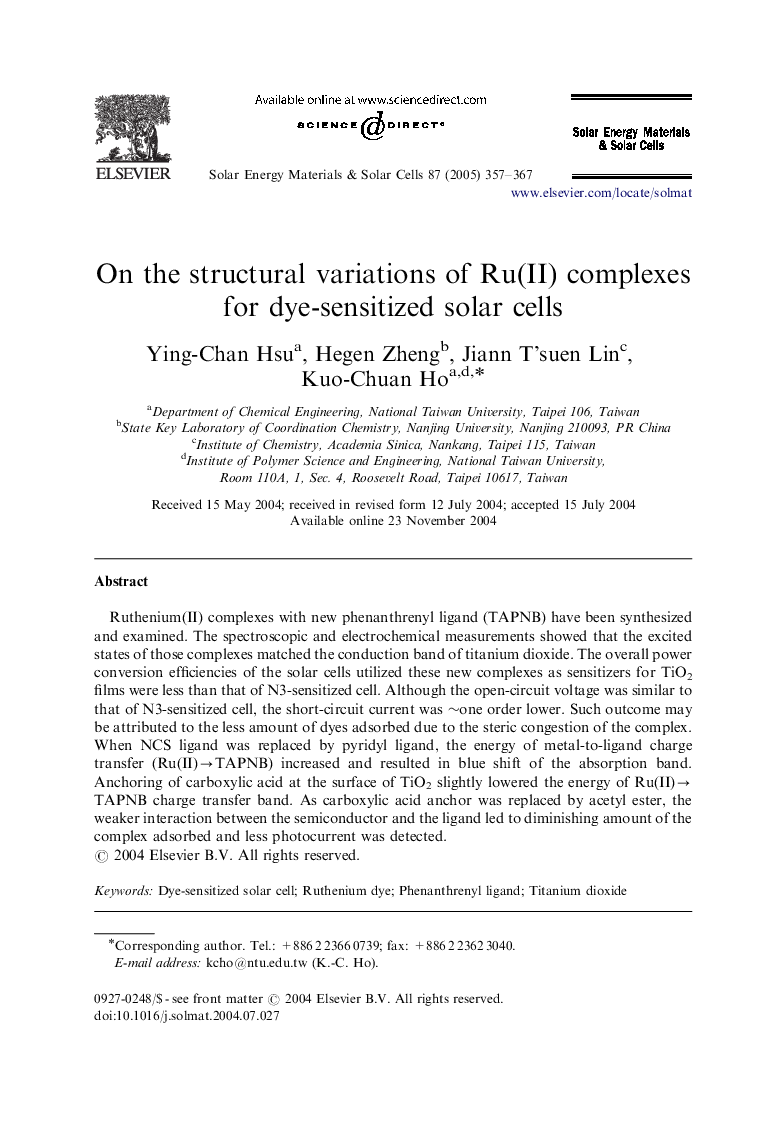| Article ID | Journal | Published Year | Pages | File Type |
|---|---|---|---|---|
| 9618681 | Solar Energy Materials and Solar Cells | 2005 | 11 Pages |
Abstract
Ruthenium(II) complexes with new phenanthrenyl ligand (TAPNB) have been synthesized and examined. The spectroscopic and electrochemical measurements showed that the excited states of those complexes matched the conduction band of titanium dioxide. The overall power conversion efficiencies of the solar cells utilized these new complexes as sensitizers for TiO2 films were less than that of N3-sensitized cell. Although the open-circuit voltage was similar to that of N3-sensitized cell, the short-circuit current was â¼one order lower. Such outcome may be attributed to the less amount of dyes adsorbed due to the steric congestion of the complex. When NCS ligand was replaced by pyridyl ligand, the energy of metal-to-ligand charge transfer (Ru(II)âTAPNB) increased and resulted in blue shift of the absorption band. Anchoring of carboxylic acid at the surface of TiO2 slightly lowered the energy of Ru(II)âTAPNB charge transfer band. As carboxylic acid anchor was replaced by acetyl ester, the weaker interaction between the semiconductor and the ligand led to diminishing amount of the complex adsorbed and less photocurrent was detected.
Related Topics
Physical Sciences and Engineering
Chemical Engineering
Catalysis
Authors
Ying-Chan Hsu, Hegen Zheng, Jiann T'suen Lin, Kuo-Chuan Ho,
